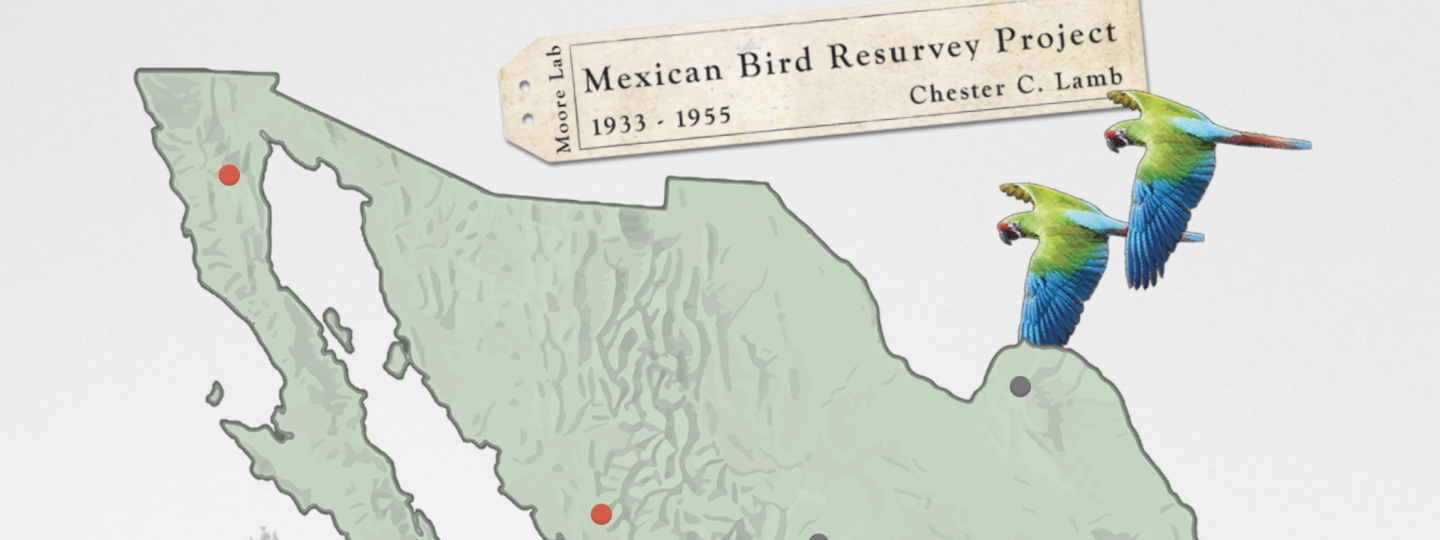Documenting 100 years of change to Mexico’s birdlife
One of the most ambitious efforts ever to catalog a country’s birdlife was begun in Mexico in the 1930s when Robert T. Moore – a poet, mountain-climber, businessman, and ornithologist – set out to describe the birds of Mexico. From 1933 to 1955, he employed Chester C. Lamb, a former curator of mammals at the MVZ, to traverse Mexico collecting birds. By the time he was finished, Lamb had collected 40,000 birds for Moore from 300 localities blanketing the country.
Even in the 1950s, Lamb noticed that the landscape was changing. He often returned to old collecting sites, and his field notes record evidence of logging, dam construction, and new power plants. It wasn’t until the 1960s and 1970s, however, that wholesale transformation of the Mexican landscape began in earnest with governmental land reform that encouraged the conversion of lowland thornscrub to irrigated agricultural lands and provided logging concessions to private companies. By the 1980s, the Mexican landscape was radically transformed. Meanwhile, Lamb’s specimens represent a snapshot in time of Mexico’s bird diversity prior to major habitat changes after the 1950s.
The Moore Lab is in the beginning phase of a 5-year project, funded by a National Science Foundation CAREER award, to resurvey the birds of Mexico to see how both the distributions and genomes of Mexican birds have changed over the last 100 years. This project, called the Mexican Bird Resurvey Project (or MBRP, pronounced mmmmm-burp!), is partnering with eBird to use modern citizen science data on where birds are now to compare to those Lamb collected or saw, which are recorded in his 22 years of field notes. We are also sequencing the genomes of 20 select species whose habitats have been altered to search of evidence of changes to DNA. Over the next five years, we will also travel to 15 of Lamb’s sites to conduct on-the-ground surveys.
If you are interested in learning about MBRP or participating, please contact John McCormack or project and outreach coordinator Jenny Wong


